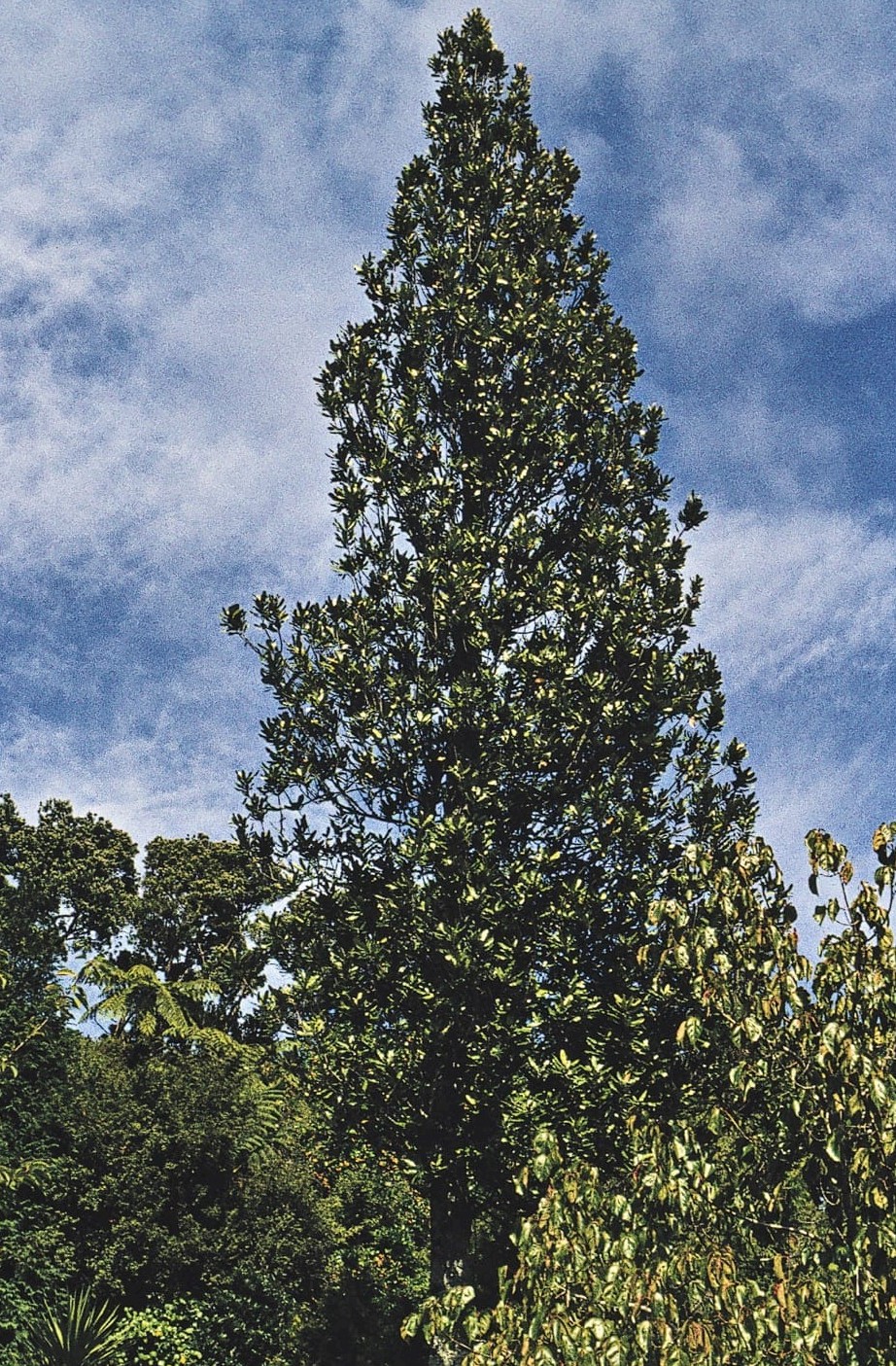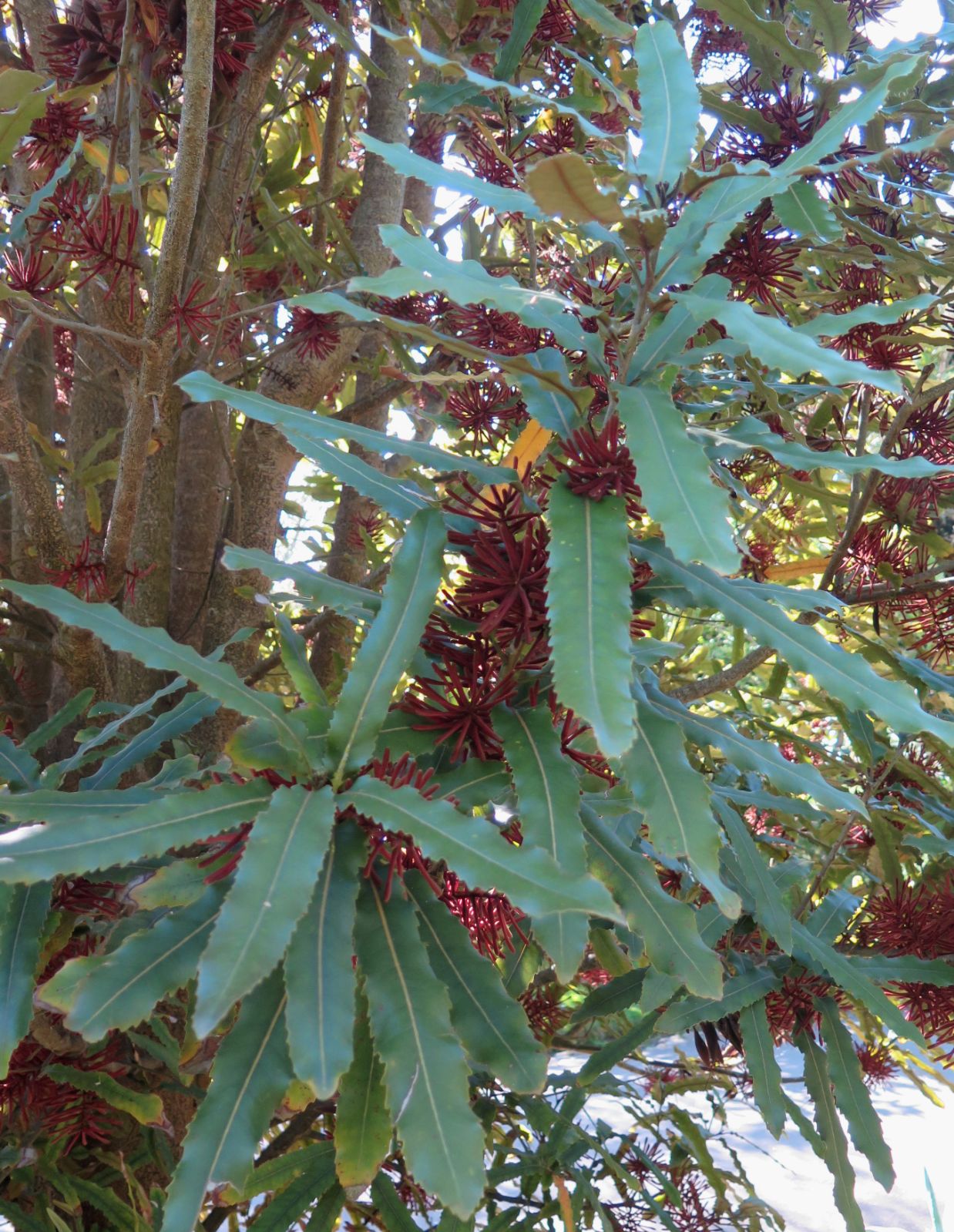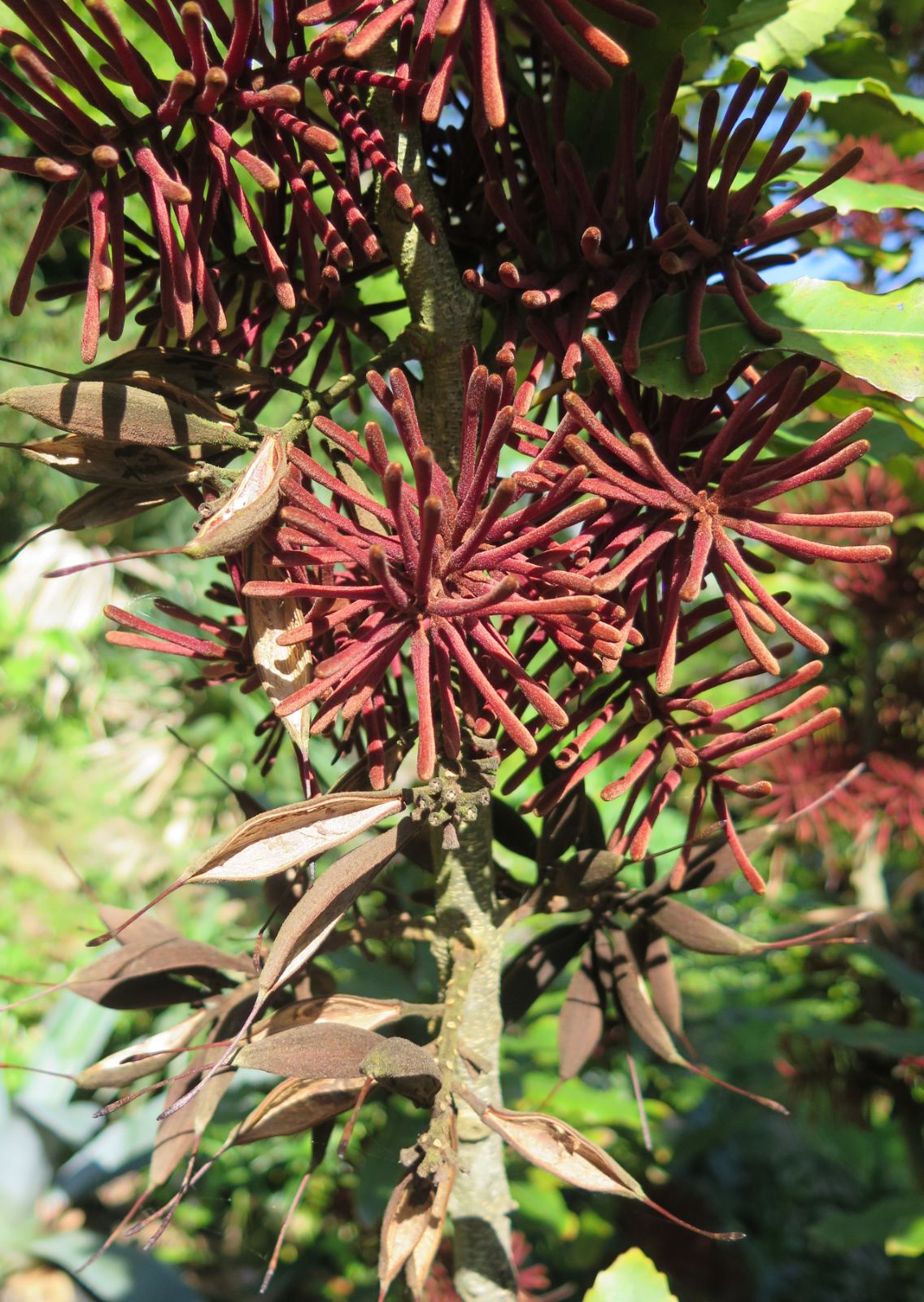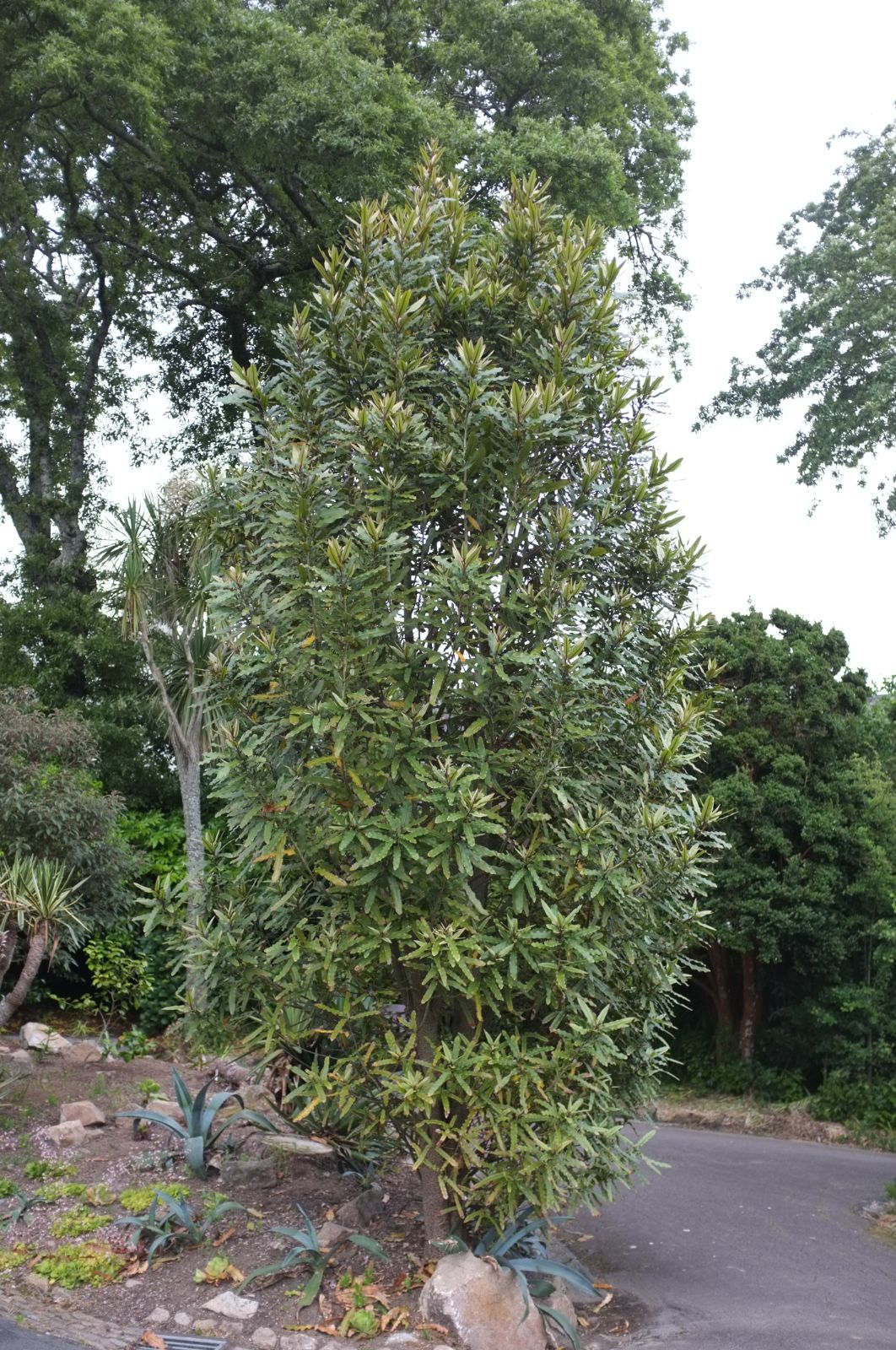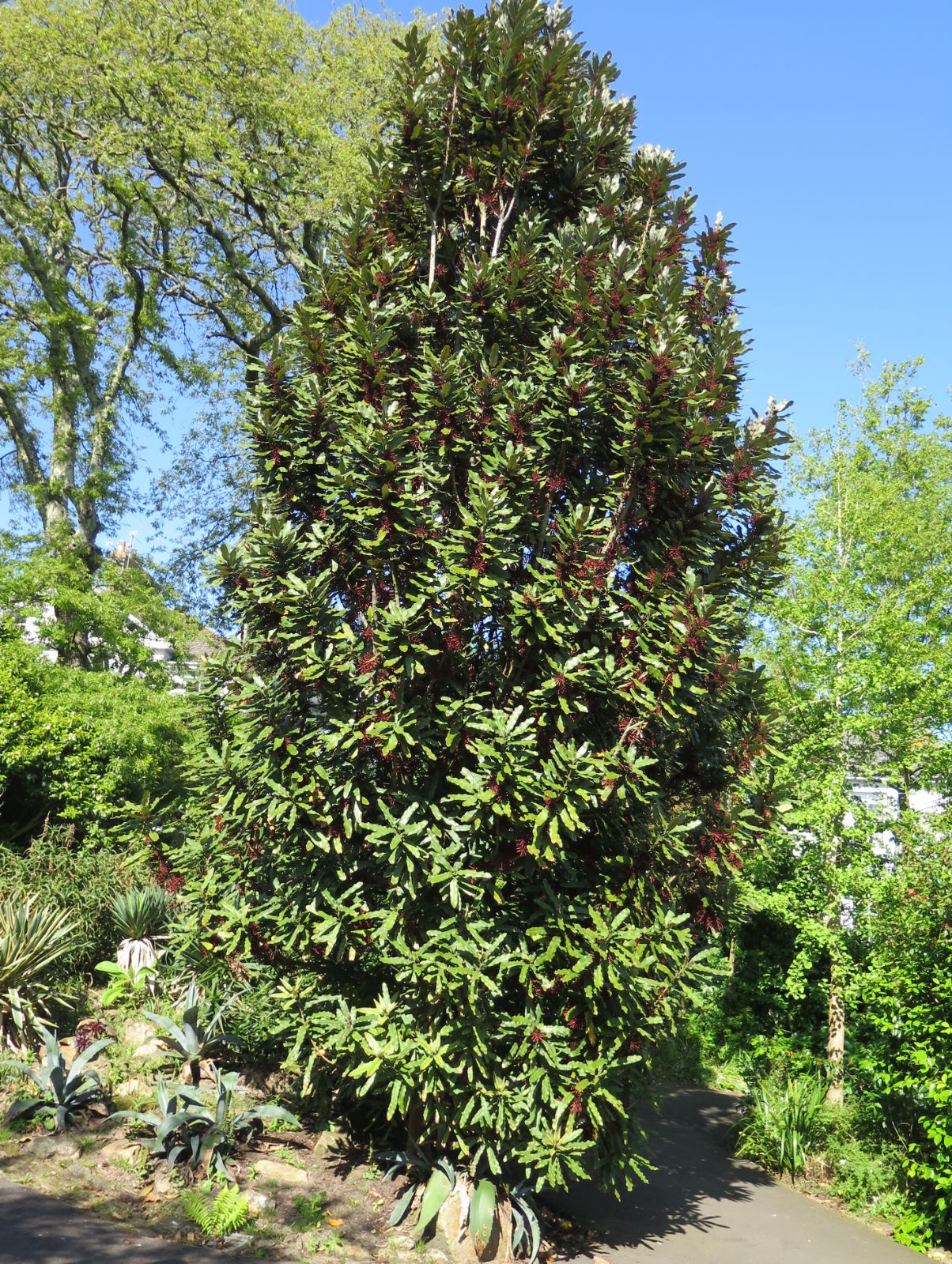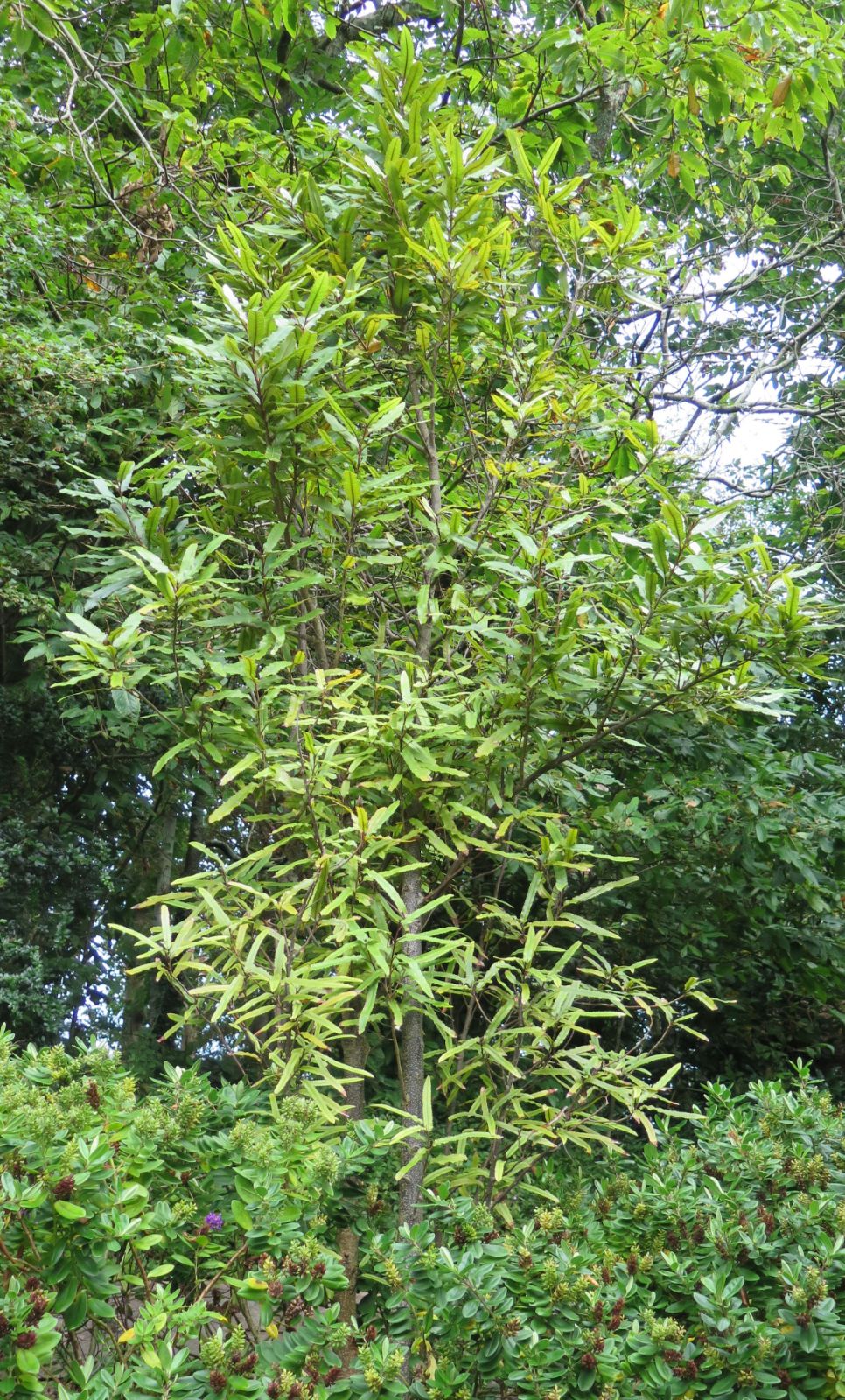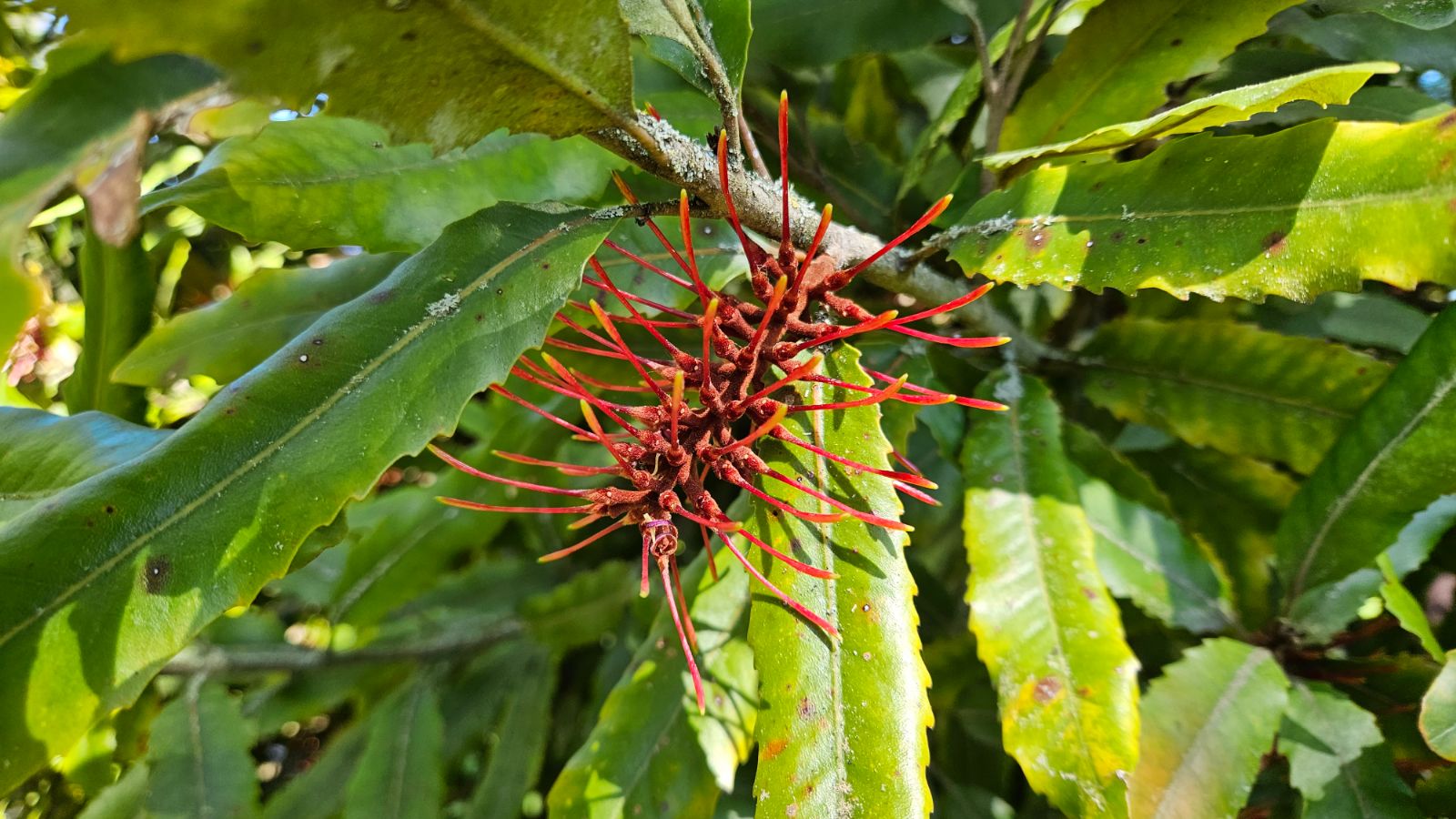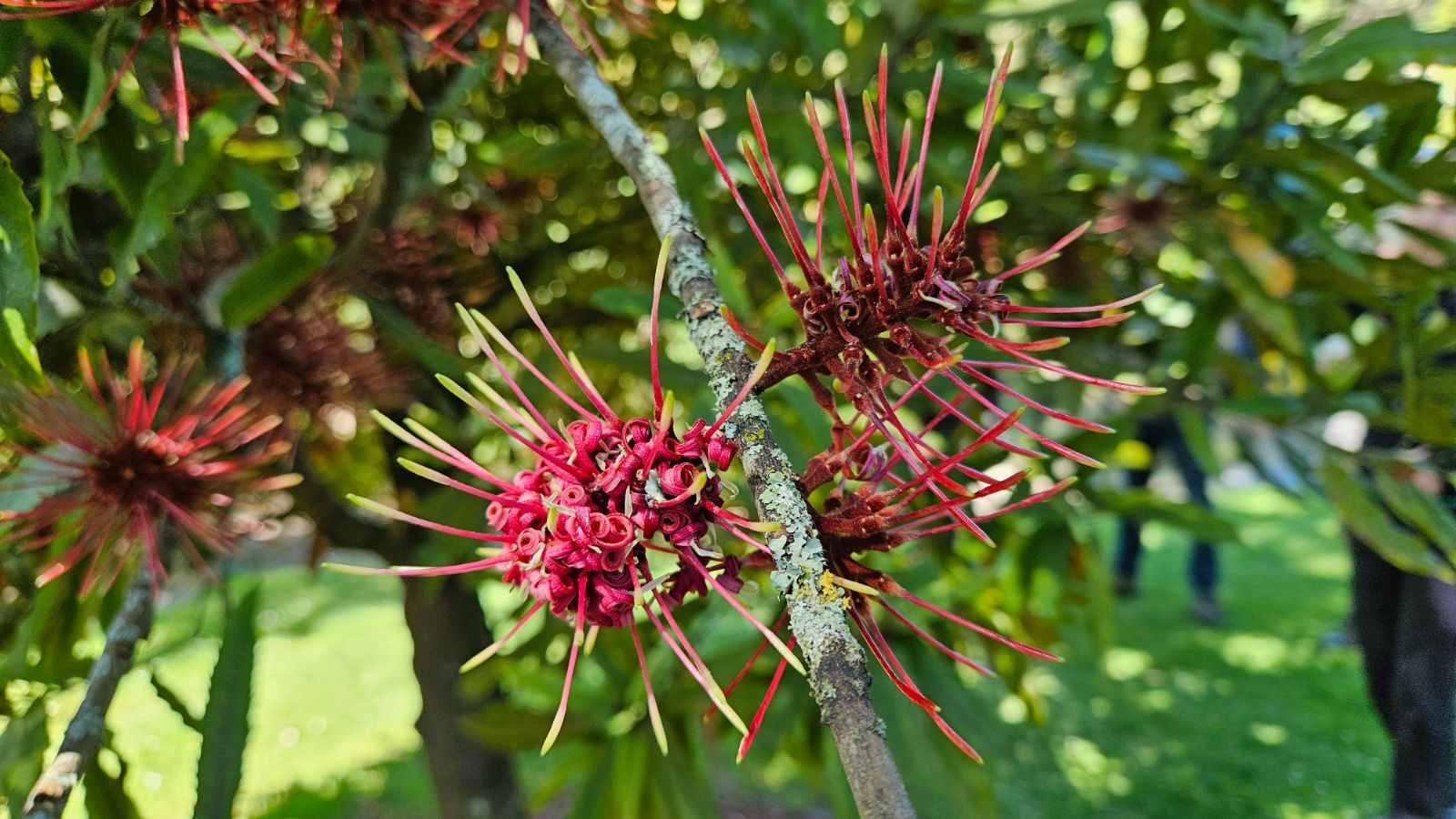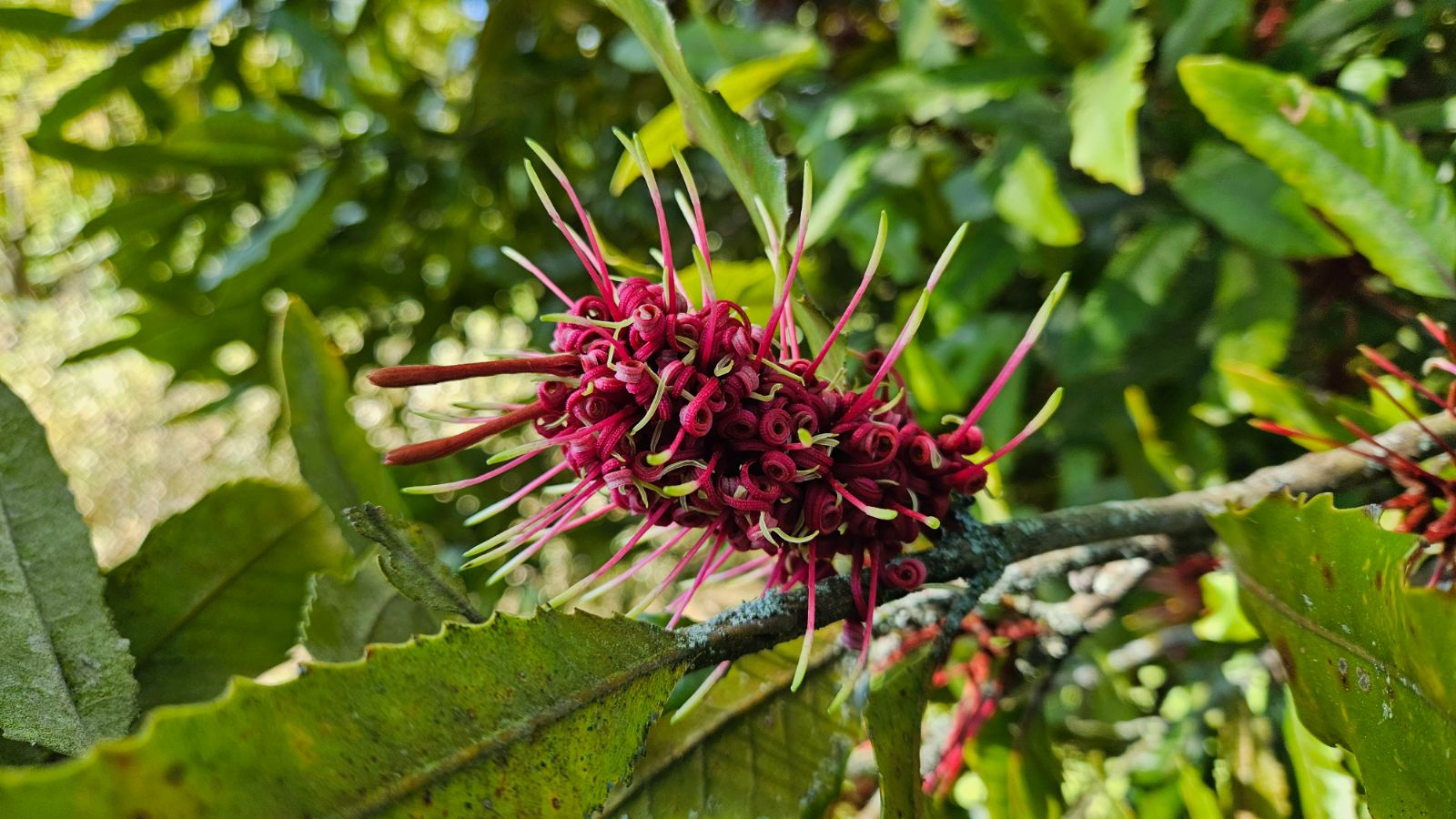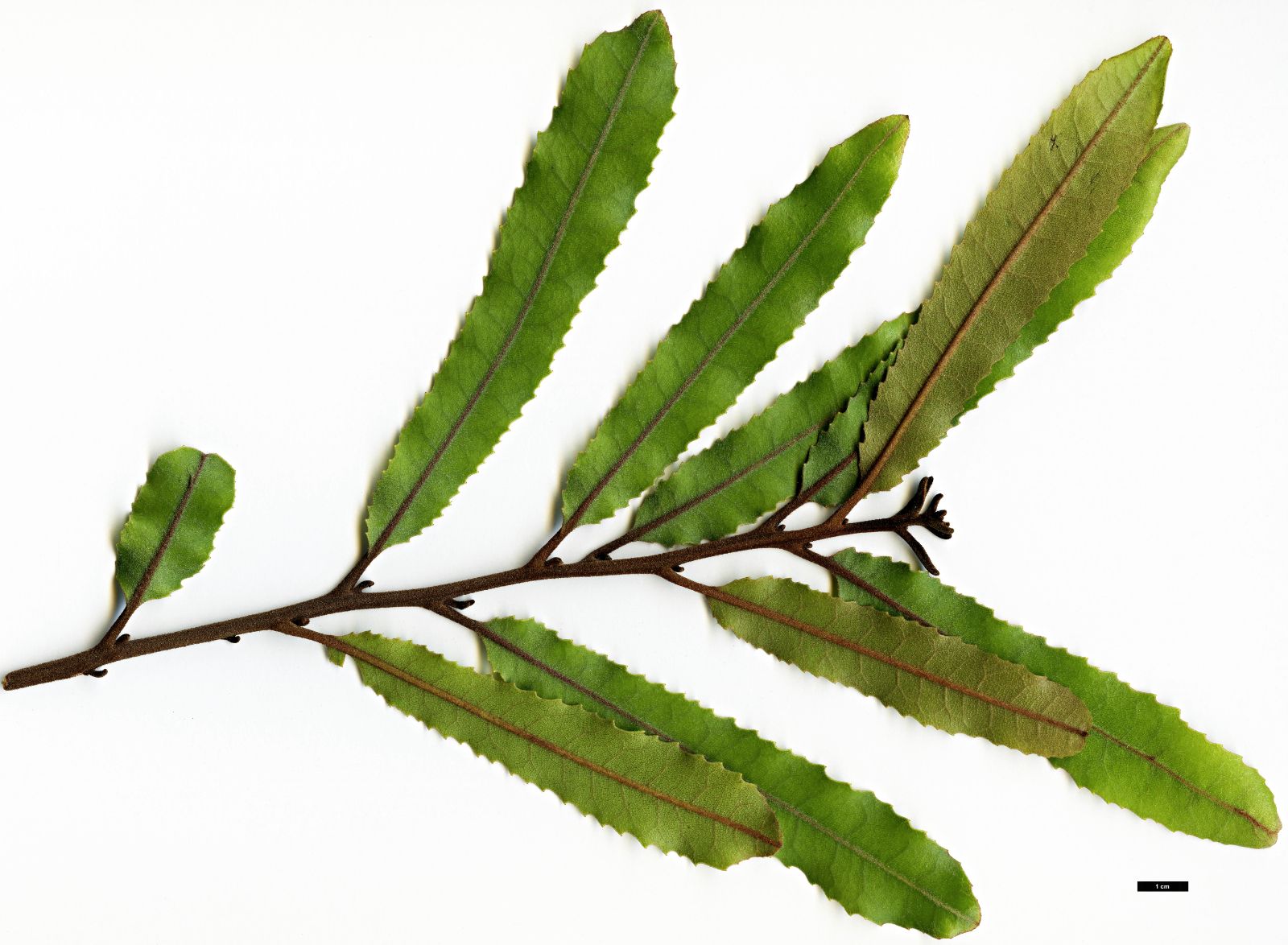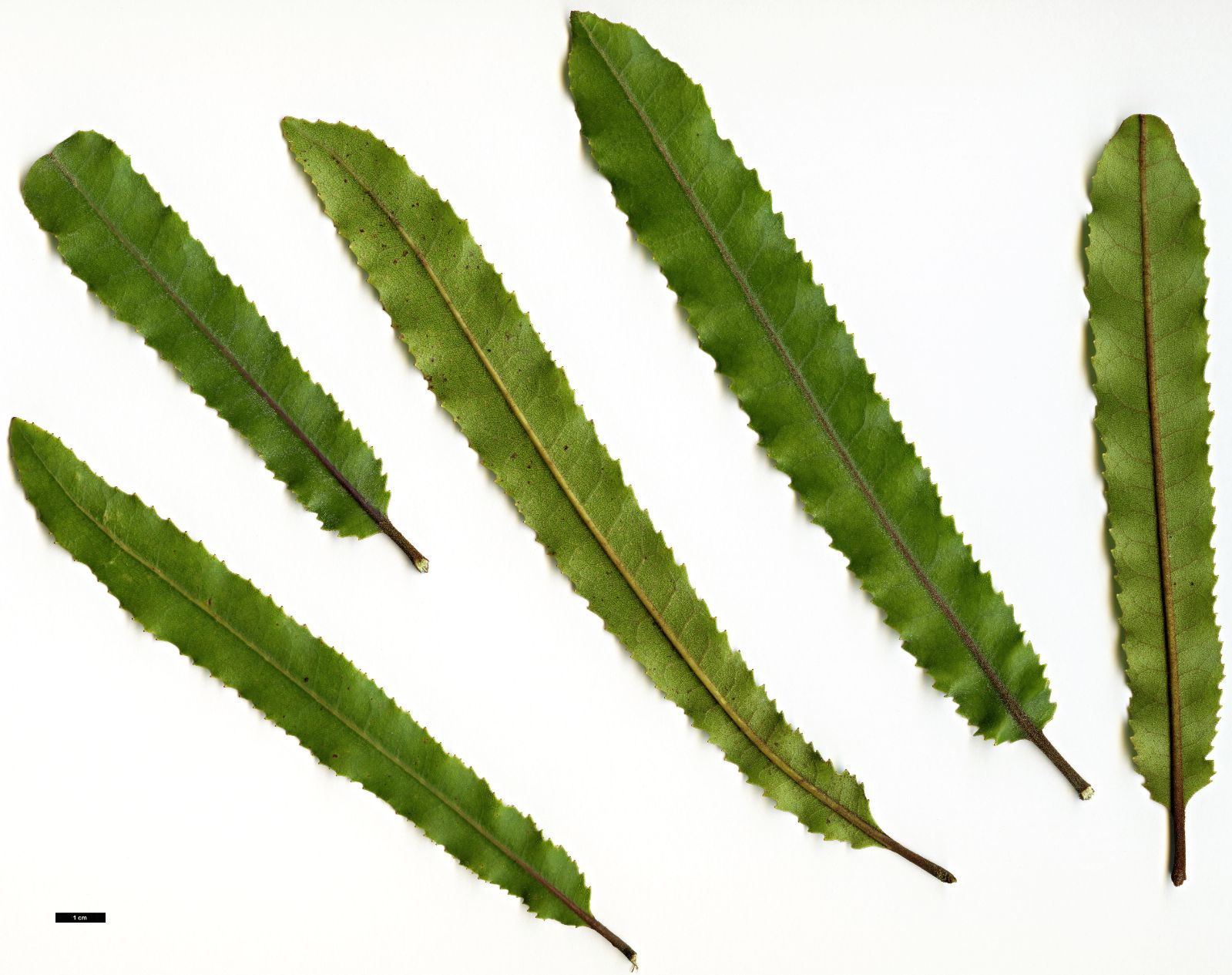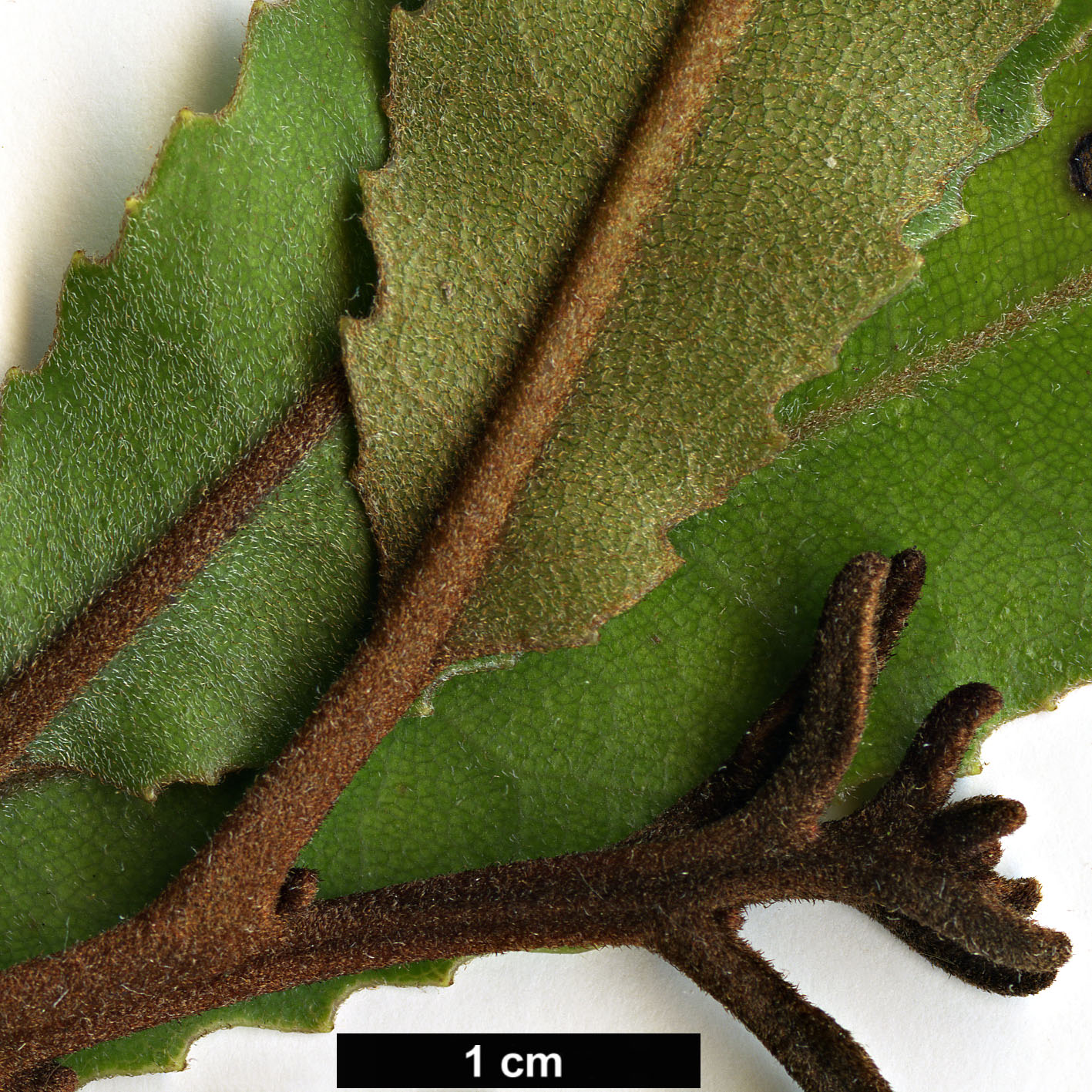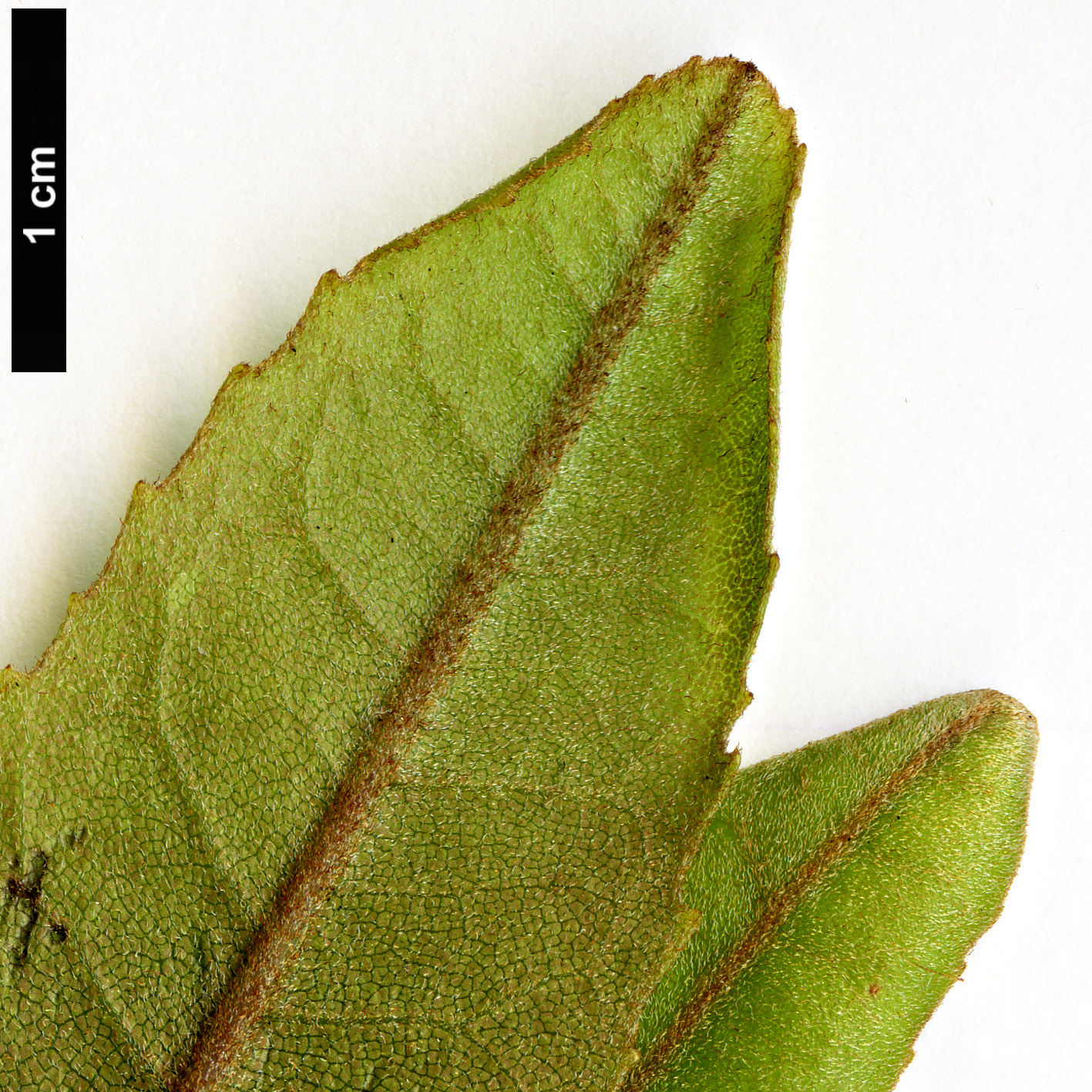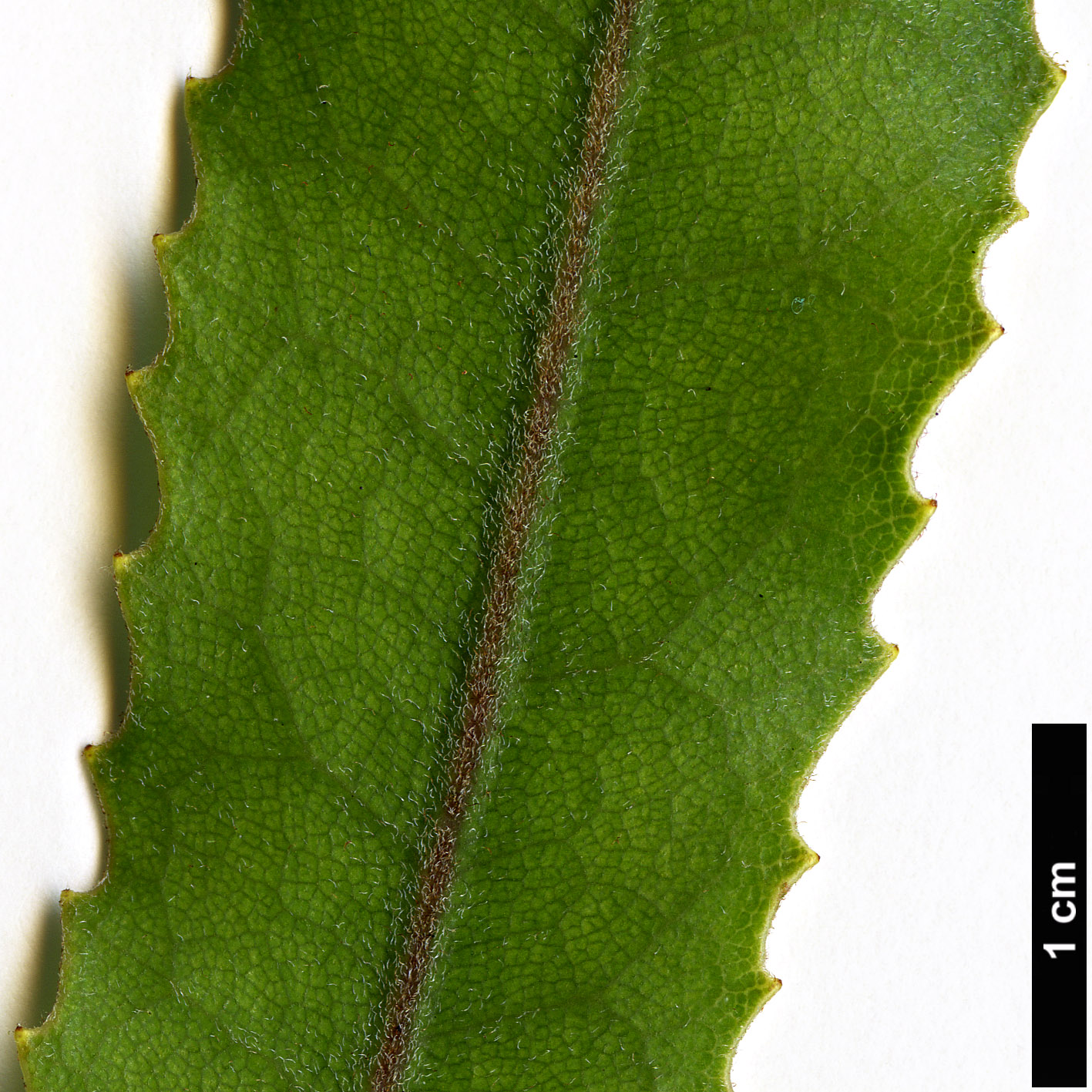Knightia excelsa
Credits
Article from New Trees by John Grimshaw & Ross Bayton
Recommended citation
'Knightia excelsa' from the website Trees and Shrubs Online (treesandshrubsonline.
Genus
Common Names
- New Zealand Honeysuckle
- Rewarewa
Other taxa in genus
Tree to 30 m, 1 m dbh; often unbranched up to 15 m. Bark greyish green and finely textured. Branchlets angled, covered in ferruginous tomentum. Juvenile leaves ±30 cm long, linear to lanceolate with serrated margins, rarely forked. Adult leaves very thick and rigid, narrow oblong to obovate, rarely forked, 10–15(–20) × 2.5–4 cm, upper surface glossy green with a reddish midrib, lower surface covered with pale tomentum, secondary veins indistinct, margins coarsely serrated, apex acute; petiole stout, c.1 cm long. Inflorescences stout and racemose, ±10 cm long. Flowers reddish brown with an unpleasant odour; perianth splitting longitudinally, tepals coiled around the base of the flower; style to 3 cm long. Follicles 3–4 cm long, valvate and tomentose, tapering towards a persistent style; seeds winged. Flowering October to December, fruiting October to December the following year (New Zealand). Allan 1961, Salmon 1980. Distribution NEW ZEALAND: North Is. (widespread), South Is. (Marlborough Sounds). Habitat Lowland or montane forest between 0 and 850 m asl. USDA Hardiness Zone 9–10. Conservation status Not evaluated. Illustration NT428.
Knightia excelsa is one of the most distinctive New Zealand trees, with a decidedly fastigiate or at least upright habit, and thus has a conspicuous outline in native vegetation. This shape, coupled with its glossy dark leaves, makes it welcome as a specimen tree in New Zealand gardens (Metcalf 2000). The clusters of dull red flowers are attractive (though foetid), but rather invisible when high among the foliage. The long, narrow, rather hard leaves are also attractive and make it well worth growing even where flowers or great stature cannot be expected.
In New Zealand it is considered hardy over much of the country, but late summer shoots may get frosted occasionally. Well-drained, but moist, acid soil in sun or shade is suggested (Metcalf 2000, Moore 2004). It is currently being tried quite widely, and seems to flourish on the west coast of Ireland, where specimens over 5 m are known, and it is also growing at Inverewe in northwest Scotland (Anderson 2002). In Cornwall it survives and grows quite well, but is considered frost tolerant to only –5 °C (Moore 2004), while in Essex it is cut to the ground each winter (Johnson 2007).

